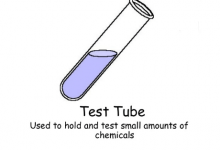Types of first Aid Treatments and Safety for Accidents in laboratory
importance of first aid for laboratory accidents
Importance of first aid in laboratory
Every laboratory must have a first aid box. The first aid box usually contains a fire extinguisher, fire blanket, bandages, and medicines, etc. An accident may occur in the laboratory due to carelessness or by chance. In any case, take the necessary steps with the help of the first aid box. Common accidents and their types of first-aid treatments are given in the table below. Also, learning first aid is still valuable. First aid cpr course equips you with the skills to support and comfort the person until professional medical help arrives. This can include reassuring them, helping them stay calm, and assisting with basic needs.
Accidents and their First Aid first aid Action
| Type of Accident | First Aid Treatment |
| cuts (i) minor cuts (ii) Serious cuts | (i) Remove the glass piece if any, and apply a little methylated spirit or tincture iodine with a piece of cotton. both act as disinfectants. (ii) Apply pressure on the cut for about 10 minutes to stop bleeding. consult a doctor. |
| Eye injuries (i) The acid in the eye (ii) Alkali in the eye (iii) Foreign particle in the eye (iv) Soreness in the eye | (i) Wash thoroughly with water and then with 1% sodium bicarbonate solution. (ii) Wash with water followed by a 1% boric acid solution. (iii) Do not rub the eyes. Remove the particle carefully with a soft handkerchief then wash with water. (iv) Put a drop of olive oil in the eyes and keep them closed for some time. |
| Burns (i) Burns with dry heat ( flame, hot objects) (ii) Burns causing blisters (iii) Acid burns (iv) Alkali burns (v) Bromine burns | (i) Apply burnol or mustard oil. (ii) Apply burn at once. Caution: Heat burns should never be washed. (iii) Wash freely with ice-cold water. Then wash with a saturated solution of sodium bicarbonate and again with water. Caution: if sulphuric acid falls on the skin wipe it before washing with water. (iv) Wash freely with water and then with 1% acetic acid solution and again with water, dry the skin and apply the burnol. (v) Wash liberally with 2% ammonia solution and apply glycerine. Wipe off glycerine after some time and apply burnol. |
| Poisons (i) Poisons swallowed (ii) Acid swallowed (iii) Caustic alkalies swallowed (iv) Salt of heavy metals swallowed. | (i) Spit immediately, wash mouth with water repeatedly. (ii) Drink a lot of water or lime water or milk of magnesia. (iii) Drink a lot of water; drink a glass of lemon or orange juice. (iv) Take milk or the white part of the egg. |
| Fire (i) Clothes Catch fire (ii) Beaker containing inflammable liquid catches fire. (iii) Spirit or oil catches fire. (iv) Electric parts catch fire. | (i) Do not run. Wrap with a blanket or with a dry cotton cloth. Lie down on the floor. (ii) Cover the blanket with a duster or damp cloth. This will cut off the supply of oxygen. (iii) Throw a mixture of sand and sodium bicarbonate. do not through water. It will simply spread the fire. (iv) Switch off the electric supply immediately and throw sand. Do not throw water in such cases to extinguish the fire. |


